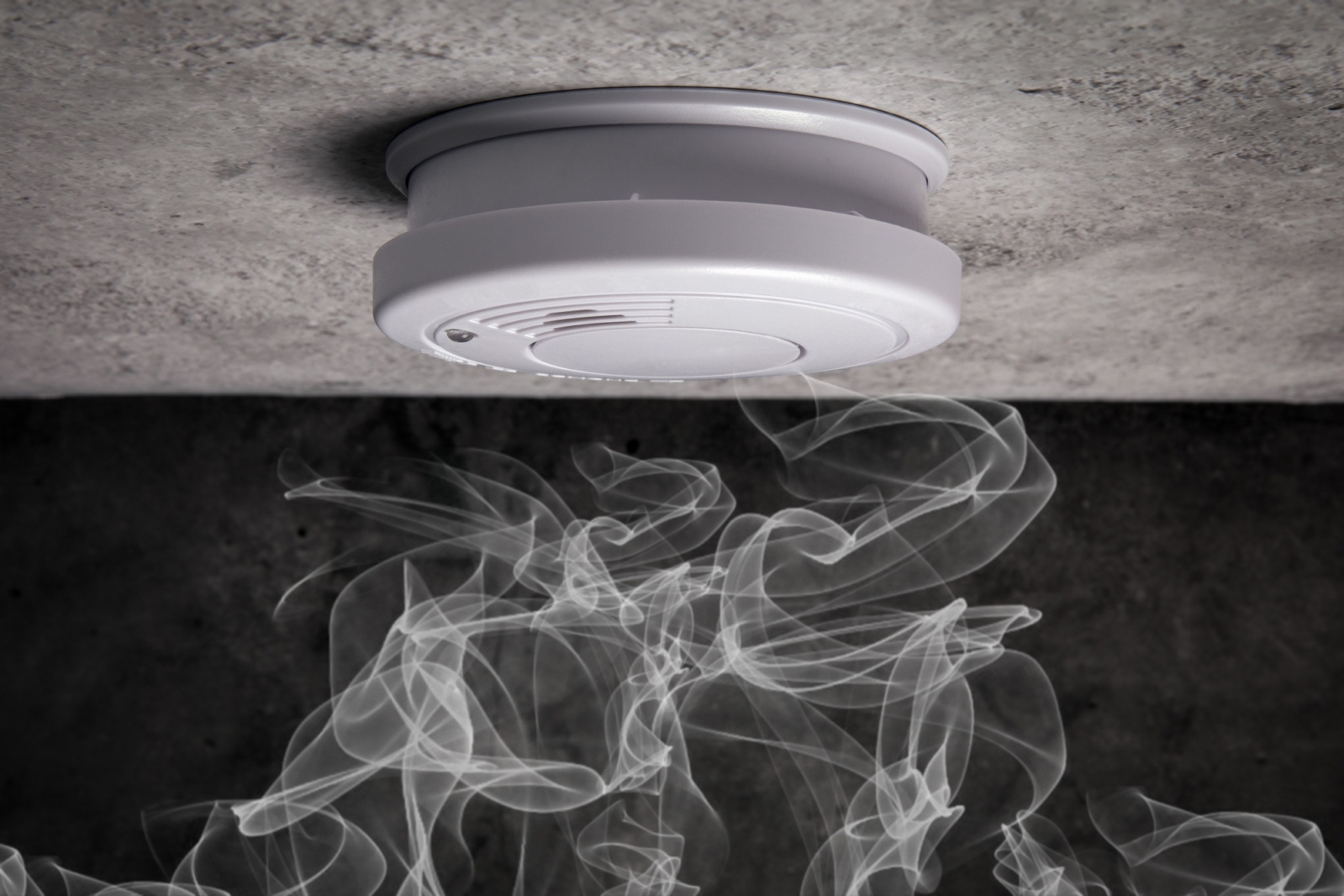How Often Should You Replace Smoke Detectors and Carbon Monoxide Detectors?

Smoke detectors and carbon monoxide (CO) detectors are essential safety devices that can save lives in emergencies. These detectors serve as early warning systems, alerting occupants to the presence of smoke or dangerous levels of carbon monoxide in the air. However, like any technology, they have a limited lifespan and require regular maintenance to ensure they function effectively. In this blog post, we'll explore how often you should replace your smoke detectors and carbon monoxide detectors to safeguard your property from smoke damage and other hazards.
Understanding Smoke Detectors:
Smoke detectors are designed to detect the presence of smoke, indicating a potential fire hazard. There are two main types of smoke detectors: ionization and photoelectric.
Ionization smoke detectors are sensitive to fast-burning, flaming fires, while photoelectric smoke detectors are more effective at detecting slow, smoldering fires. Many modern smoke detectors utilize a combination of both technologies to provide comprehensive coverage.
How Often to Replace Smoke Detectors:
The National Fire Protection Association (NFPA) recommends replacing smoke detectors every ten years. Over time, the sensors in smoke detectors can become less sensitive, reducing their ability to detect smoke effectively. Additionally, the components of the detector, such as the battery and circuitry, may degrade over time, leading to malfunctions or false alarms.
In addition to replacing smoke detectors every decade, it's essential to test them regularly to ensure they are functioning correctly. Most smoke detectors have a test button that allows you to check the alarm sound. It's also crucial to keep the detectors clean and free of dust, as this can interfere with their operation.
Understanding Carbon Monoxide Detectors:
Carbon monoxide (CO) is a colorless, odorless gas that is produced by the incomplete combustion of fossil fuels such as gas, oil, and wood. Exposure to high levels of carbon monoxide can be deadly, as it interferes with the body's ability to transport oxygen.
Carbon monoxide detectors are designed to alert occupants to the presence of elevated levels of CO in the air. Like smoke detectors, there are different types of carbon monoxide detectors, including biomimetic, electrochemical, and semiconductor sensors.
How Often to Replace Carbon Monoxide Detectors:
The lifespan of carbon monoxide detectors varies depending on the type and model. However, as a general rule of thumb, it's recommended to replace carbon monoxide detectors every five to seven years. Like smoke detectors, the sensors in carbon monoxide detectors can degrade over time, reducing their effectiveness.
In addition to regular replacement, carbon monoxide detectors should be tested monthly to ensure they are functioning correctly. Most detectors have a test button that allows you to verify that the alarm sounds when activated. It's also essential to keep carbon monoxide detectors clean and free of dust and debris.
Additional Tips for Maintaining Detector Safety:
In addition to replacing smoke detectors and carbon monoxide detectors according to the recommended timelines, there are several other steps you can take to ensure the safety and effectiveness of these devices:
- Install detectors in the right locations: Smoke detectors should be installed on every level of your property, including inside closed rooms, and outside office areas (hallways/main areas). Carbon monoxide detectors should be placed near work areas and on each level of the property.
- Replace batteries regularly: Many smoke detectors and carbon monoxide detectors are battery-powered. It's essential to replace the batteries at least once a year or as soon as you hear the low battery chirp.
- Test detectors regularly: In addition to monthly tests, consider testing your detectors whenever you return to the property from an extended absence, such as a vacation.
- Replace detectors after a significant event: If your property experiences a fire or carbon monoxide leak, replace all smoke detectors and carbon monoxide detectors, even if they appear to be undamaged, to mitigate potential smoke and fire damage risks.
Smoke detectors and carbon monoxide detectors are critical safety devices that every property should have. By replacing these detectors according to the recommended timelines and following proper maintenance procedures, you can ensure that they continue to provide reliable protection for your business and your team. Investing in the safety of your business is always a worthwhile endeavor, and staying vigilant with detector maintenance is a crucial part of that commitment.
NDS: Your Resource. Your Advocate. Your Partner.
At NDS, we are dedicated to helping businesses and individuals recover from unexpected events. Our mission is to provide reliable and efficient restoration services for properties affected by disasters, whether it's fire and water damage or natural disasters. Our experienced professionals and personalized approach ensure a smooth and hassle-free restoration process, supporting you every step of the way.
We handle disasters of any magnitude, but prevention and preparedness remain our strongest tools, bolstered by the NDS Prime Program. Whether it's the safety of your home or the continuity of your business operations, proactive measures are paramount. By ensuring your property is equipped with properly maintained smoke detectors and carbon monoxide detectors and implementing comprehensive safety protocols in your business, you're safeguarding what matters most.
Prepare for the unexpected, minimize disruptions, and rest assured that with leading innovations, fast response times, and a wide array of services, we're committed to getting you back on track swiftly. Safety is our priority, and together, we can navigate any challenge with resilience and resolve. Trust NDS to be your partner. Contact us today for unparalleled disaster preparedness and restoration services.

